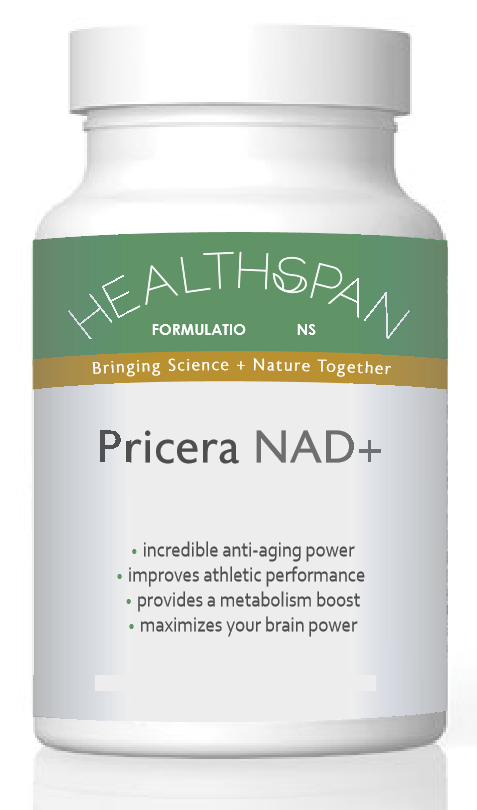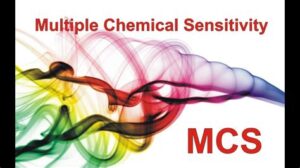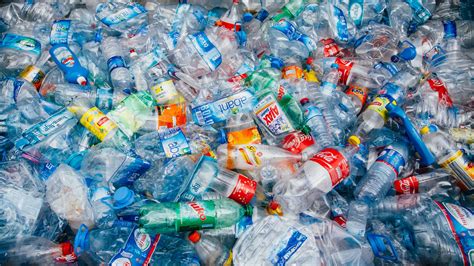NAD+ – Nicotinamide Adenine Dinucleotide is a co-enzyme present in every cell in the body and it is vital for cellular function.
Like hormones and other endogenous compounds in the body, NAD+ levels decrease as we age however they decrease precipitously with NAD+: down 50% at the age of 50 and down 90 – 96% at the age of 80.
One of the key functions of NAD+ is to activate the Sirtuin longevity genes which as the name implies are important for healthy aging. Without adequate levels of NAD+ to activate the Sirtuin genes, vascular aging accelerates.
We can help to optimize our NAD levels as we age by engaging in exercise and as well by fasting.
Another way to optimize NAD+ levels is to take a precursor formulation.
Taking NAD+ itself is not effective because it gets broken down in the digestive system.
Optimizing NAD+ levels as we age has been shown to provide many health benefits including:
KEY APPLICATIONS
• Neurodegenerative conditions e.g. Parkinson’s
• Inflammation
• Addictions
• Chronic Fatigue Syndrome
• Exercise performance and recovery
• Immune system activation
• Diabesity Spectrum
•Mitochondrial dysfunction
• Hypertension
• Elevated cholesterol levels
• Depression
• Oxidative stress
For more information on NAD+, the Sirtuin longevity genes and NAD+ precursor formulations such as our top selling practitioner quality Pricera formulation reach out to me – or review some of the info on our website:
https://roblamberton.com
Or in the following document on Pricera:
https://lnkd.in/gxS9RJDv
Category: Brain Health / Conditions
Toxic Teacher Syndrome
Written by Rob on . Posted in Anti-aging, Blood Sugar, Brain Health / Conditions, Cardiovascular Health, Digestion / Gut Health, Disease Conditions, Environmental Toxins, Health News, Pain / Inflammation, Toxins. Leave a Comment
Some individuals develop significant but difficult to diagnose and treat health issues and bounce around the health care system trying to get help for health issues which seem almost impossible to correctly diagnose – let alone develop effective treatment protocols.
This newsletter article from the Clinical Rounds section of Functional Medicine University discusses one type of condition that can cause this issue: MCS – Multiple Chemical Sensitivity.
Here is the article:
MCS can be difficult to diagnose because it can mimic a spectrum of other conditions.
A 25 year old woman named Jan begins her new career as a 2nd grade school teacher. After many of years of preparation, Jan is ready to serve the public and help her young students learn how to read and write. Beginning in a newly renovated school is an extra bonus which makes our new teacher proud that she became part of the educational system. Everything is moving along fine.. she couldn’t be happier!
Three months pass by and Jan has noticed that her concentration is just not right. She has been getting a little “edgy.” Definitely not like her. Her husband is concerned that maybe she is pushing herself a little too much and encourages her to simply slow down and pace herself. As the weeks go by, she begins experiencing headaches over her eyes and the back of her head. The headaches are now occurring more frequently; a minimum of 3-4 times a week.
Six months into the school season and her symptoms are getting worse. In addition to her headaches, lack of concentration and irritability, Jan is now having insomnia, cries over nothing and has noticed an unusual tingling in her face, hands and feet. Concerned, our once “excited” trainer of children decides to see her family physician. After a brief consultation and a basic physical evaluation, her physician is confident she is again just overdoing it and recommends she lighten her work load. In the mean time, she is prescribed Xanax, a mild tranquilizer to settle her nerves. Feeling reassured that nothing is seriously wrong, our teacher returns to her young students and pushes on.
Another three months pass and this time our once highly motivated teacher is only a “shadow” of herself. It takes every ounce of energy to get started in the morning. She is having greater difficulty preparing her school assignments and simply is just exhausted! In a state of desperation she is referred to a psychiatrist. He diagnoses her with depression and prescribes an anti-depressant and also recommends counseling.
After two emotional years of trying an assortment of anti-depressants and hours of counseling, Jan is stuck in a nightmare.. a web of medical labels… depression, chronic fatigue syndrome, stress … just name a few!
Is It Possible Something Has Been Missed?
Every year thousands of teachers are afflicted with a condition that simply “zaps” the life right out of them. Most physicians are at a total loss to understand what is behind this mysterious illness. Unfortunately, many people are looked at as hypochondriacs and continue to suffer year after year.
The Diagnosis
By a stroke of luck and a lot of prayer, Jan stumbled on a medical article that “painted” an exact picture of her health challenges. She was amazed to find that she was not alone and that thousands of other teachers were experiencing the same problem.
She was able to find a physician who was trained in making this difficult diagnosis and learned that she was suffering with something called “Multiple Chemical Sensitivities (MCS).” Some physicians have coined the term “The Toxic Teacher Syndrome” due to the numbers of teachers suffering with the same symptoms.
What is MCS?
Chemical Sensitivity is not a new term. It has been around for many years. The diagnosis MCS was researched by allergist Theron G. Randolph, M.D. (1906-1995). Dr. Randolph discovered that many of his patients became ill from chemical substances that were normally considered safe at the recommended dosage. In the 1950s, Dr. Randolph concluded that people were failing to adapt to modern-day synthetic chemicals. As more research was done on the effects of MCS, doctors suggested that the immune system is like a barrel that continually fills with chemicals until it overflows and symptoms appear. Potential chemical toxins include:
- Formaldehyde which can be found in foam insulation, plywood, particleboard and press cabinets, fabric finishes, new carpet, polyurethane foam rubber (used in pillows, cushions, mattresses and rug padding), mobile homes, adhesives, synthetic clothes that crease resistant, wrinkle resistant
- Oil vapors: from oil furnaces, motor-oil air-conditioning filters, electric kitchen appliances such as food processors, blenders, can openers.
- Polyethylene plastics: fake leather, artificial flowers, shower curtains.
- Household chemicals such as dry cleaning chemicals in clothes, mothballs, rug-cleaning products, paints, solvents, stain removers, air fresheners, window washing compounds
- Polyesters in clothing, upholstery, drapery, furniture and stuffing for pillows and quilts.
- Pesticide residue on cottons and woolens; residues from exterminators.
- Epoxy adhesives on plastics, electronic equipment (TVs, microwaves,) which release gases when heated up.
- Common school paraphernalia such as carbon paper, ink, mimeographic and duplicating chemicals, glue
How Do These Chemicals Cause Health Problems?
For most people the constant exposure to the above chemicals may not pose any health challenge. However, an individual may come in contact with a freshly painted room and begin to experience dizziness, nausea, headaches etc.. Usually, however, it requires the constant everyday exposure to various toxins that simply become cumulative and eventually overwhelm the body’s ability to eliminate them. When your detoxification system is in good working order, it protects you from low level chemical build-up. It is interesting that most of the sixty thousands chemicals in current use today have been developed in the last forty years. In other words, it seems quite clear that these chemicals are being made at a faster rate than our bodies are able to get rid of them.
Chemicals are known to injure the part of the cell that produces energy causing swelling of the cell membrane and a decreased ability to pump out chemical toxins. When this occurs you can experience fatigue, weakness, poor memory, migraine headaches, insomnia, anxiety, etc..
So What Happened to our Teacher?
When Jan first arrived in her new school, she was greeted with fresh paint, new carpet, new furniture etc.. which was all piled in her small room. This was further complicated by inadequate ventilation. When the chemical load to her system was too high, some of the chemicals were simply unable to be detoxified. This resulted in the slow accumulation of chemicals backing up in the blood causing her health to slowly spiral downward.
How Was She Helped?
Our school teacher was thoroughly evaluated receiving a physical examination, blood tests for liver function, comprehensive detoxification blood test and chemical toxicity assessment.
Detoxification Profile: This test is used to determine how well her body is getting rid of toxins.
Click here for a PDF copy for better clarity
of the following lab test

Comments and Results:
As you can see above ( please review PDF copy to allow for improved readibility), Jan had a normal phase I detoxification function but her phase II revealed a high plasma cysteine with low plasma sulfate and an impaired glucuronidation detoxification.
** Detoxification is much more complicated than most doctors (not trained in the diagnosis of detoxification) make it out to be and commonly will cause more harm than good.
HERE IS WHAT YOU NEED TO KNOW
A healthy liver uses two mechanisms, called Phase I and Phase II detoxification to remove toxins.
In Phase I, your body’s enzymes activate toxic substances to make them more accessible to Phase II.
In Phase II, other enzymes convert toxins to more water-soluble forms, which your body eliminates through urine or stool. Major Phase II pathways include glutathione, sulfate, glycine, and glucuronide conjugations. Individual xenobiotics and metabolites usually follow one or two distinct pathways.
Chemical Testing
A chemical blood exposure test was also performed. This test is extremely valuable in determining the levels of chemical toxins in the blood.
A checklist of suspected chemical toxins was done as well as an assessment of the schools ventilation system.
The Results
After suffering for a little over two years, her tests revealed the following:
- The Liver Profile was normal
- The Detoxification Profile revealed a compromised phase II detoxification with high plasma cysteine with low plasma sulfate and an impaired glucuronidation detoxification resulting in an inability to process the load of chemicals.
- The Chemical Testing revealed high levels of: Formaldehyde,Toluene and Xylene
- The checklist accurately correlated with her high levels of chemicals in her blood.
- As suspected, although the school received a face-lift with new furniture and a fresh coat of paint, the ventilation system was functioning at approximately 40% efficiency and needed a major overhaul!!
The Treatment
The first step was too begin treatment on improving Jan’s ability to detoxify by improving her impaired glucuronidation detoxification and decrease the total load of toxic elements.
- Ruled out hypothyroidism (delays maturation of conjugating enzyme)
- Correct nutrient deficiencies
- Increase intake of nutrient cofactors for glucuronidation
- L-glutamine, aspartic acid, niacin, vitamin B6
- Support other Phase II pathways, especially sulfation and glycination, to reduce burden
- Increase intake of cruciferous vegetables (induces conjugating enzyme)
- Had teacher purchase a Four Stage Air Filtration System for her classroom to improve ventilation
- Our teacher had a comprehensive safe environmental check of her classroom. Chemical toxins were replaced with non-toxic products. This was carried over to her home as well.
The Outcome
Within 2 weeks, Jan began to notice an improvement in her health. Her energy gradually increased, headaches were reduced to 1 every 2 weeks, the depression lifted, insomnia was replaced by sound restful sleep. By the end of 2 and half months, Jan felt like her old self again and has continued to do well ever since.
Our Comments:
This article presents a real case and demonstrates the sad fact that thousands of people are suffering needlessly. Unless a physician has studied and been trained in the diagnosis and treatment of environmental illness, many more people especially teachers and other professionals working in similar environmental surroundings will continue to develop MCS and unfortunately be “branded” undiagnosable and sadly a hypochondriac. The truth of the matter is.. there is an answer and this answer can pull many people out of this nightmare.
Why Excitotoxins Are Harmful To Our Health
Written by Rob on . Posted in Anti-aging, Brain Health / Conditions, Diet, Disease Conditions, Environmental Toxins, Health News, Toxins. Leave a Comment
Today I want to share with you an article written by Ron Grisanti D.C., D.A.B.C.O., DACBN, MS, CFMP from Functional Medicine University on the topic of Excitotoxins.
Excitotoxins are chemicals substances that overstimulate certain type of cells in the brain, all of the nervous system and many other organs.
In high and excessive amounts these cells become damaged and may die.
The underlying mechanism of excitotoxins has been attributed to the following diseases: alzheimer’s, parkinson’s, multiple sclerosis, strokes, autism, huntington’s disease.
Excitotoxins have also been found to be associated with the following diseases: migraines, diabetes, atherosclerosis, sudden death from heart disease, eye diseases, digestive disorders, autoimmune diseases, growth of tumors, spread of cancer and obesity.
The Most Common Excitotoxin is Glutamate
Glutamate is the main component of Monosodium glutamate (MSG)
As a general rule, the more a food is processed, the more likely it is to contain MSG. Foods that commonly use MSG include potato chips, flavored crackers, canned soups, dry soup mixes, canned meats, diet foods, soy sauces, salad dressings, cured meats and poultry injected with broth. But reading the labels won’t always help you.
When a food product is 99 percent pure MSG it is called “monosodium glutamate” by the FDA and must be labeled as such. However, when a food product contains less than 99 percent MSG, the FDA doesn’t require that the MSG be identified. So it often appears on labels in various disguised forms, such as “hydrolyzed vegetable protein,” “spices” and “natural flavoring.”
Here’s a quick list of potentially suspect ingredients to watch for:
Ingredients that may contain 30 to 60 percent MSG:
hydrolyzed vegetable protein
hydrolyzed protein
hydrolyzed plant protein
plant protein extract
sodium caseinate
calcium caseinate
yeast extract
textured protein
autolyzed yeast
hydrolyzed oat flour
Ingredients that may contain 12 to 40 percent MSG:
malt extract
malt flavoring
bouillon
broth
stock
natural flavoring
natural beef or chicken flavoring
seasoning
spices
Ingredients that may contain some MSG:
carrageenan
enzymes
soy protein concentrate
soy protein isolate
whey protein concentrate
some soymilk
Although I have presented the downside of excessive glutamate it is important for me to let you know that glutamate does have positive health benefits.
These would include the following benefits:
- Acting as an important neurotransmitter in the brain — it has excitatory effects, meaning it makes neurons more likely to fire
- Serving as a precursor for the neurotransmitter GABA (gamma-aminobutyric acid), which is the main inhibitory neurotransmitter in the central nervous system
- Supporting growth and development of the brain
- Helping cells survive and differentiate and supporting formation and elimination of nerve contacts (synapses)
- Supporting cognitive functions, including learning and memory.
- Stimulating gut movement by increasing gut serotonin levels
- Producing the antioxidant glutathione
- Regulating inflammatory processes
So what is one to do when it comes to this special and sometimes detrimental neurotransmitter.
One answer is to test if you suspect glutamate toxicity. If glutamate levels are high then you have an objective marker to carefully monitor as you get your patients to taper and avoid foods high in glutamate.

Doctors Data Lab
If you don’t want to invest in testing the next best step is to avoid foods in glutamate and see if you see an improvement in their symptoms.
Natural plant products and extracts that reduce glutamate and immunoexcitotoxicity
Curcumin, quercetin, green tea catechins, balcalein, and luteolin have been extensively studied to dampen the detrimental impact of excessive glutamate
References:
https://www.frontiersin.org/articles/10.3389/fpsyt.2018.00561/full
https://pubmed.ncbi.nlm.nih.gov/8732541/
https://pubmed.ncbi.nlm.nih.gov/10613826/
https://www.ncbi.nlm.nih.gov/pmc/articles/PMC7098326/
https://link.springer.com/referenceworkentry/10.1007/978-1-4614-5836-4_148
https://www.frontiersin.org/articles/10.3389/fnins.2015.00469/full
https://pubmed.ncbi.nlm.nih.gov/29859974/
https://www.ncbi.nlm.nih.gov/pmc/articles/PMC7386414/
https://pubmed.ncbi.nlm.nih.gov/21288239/
https://www.nature.com/articles/srep44120
https://www.ncbi.nlm.nih.gov/pmc/articles/PMC3307240/
https://www.ncbi.nlm.nih.gov/pmc/articles/PMC4478437/
https://www.ncbi.nlm.nih.gov/pmc/articles/PMC8977545/
https://pubmed.ncbi.nlm.nih.gov/26788243/
https://www.ncbi.nlm.nih.gov/pmc/articles/PMC7260594/
https://europepmc.org/article/med/27185356
7 Ways Plastics Damage the Body
Written by Rob on . Posted in Anti-aging, Blood Sugar, Brain Health / Conditions, Cardiovascular Health, Digestion / Gut Health, Disease Conditions, Environmental Toxins, Health News, Toxins. Leave a Comment
Today I want to share with you an article which discusses different ways plastics can damage the body.
Are you looking to develop your own nutritional supplement formulations? I can help you with that! Reach out to me and we can discuss how I can help you.
As Ron suggests at the beginning of the article:
“Plastics (or the chemical name, phthalates) are now considered the number one pollutant in the human body”.
In the next edition of our newsletter I will share a further article from Ron which discusses how to detox plastic compounds out of the body.
This article was written by Ron Grisati from Functional Medicine University.
Ronald Grisanti D.C., D.A.B.C.O., D.A.C.B.N., M.S.,CFMP
Plastics (or the chemical name, phthalates) are now considered the number one pollutant in the human body. They make products flexible, durable, and these chemicals are also in items you would not consider to be plastics, like pesticides, detergents, cosmetics, medications, or your shampoo. They are found everywhere. It is difficult to completely avoid them.
You can live in the most pristine place on planet earth and still find animals polluted with plastics.
It is an interesting fact that plasticizers are over 10,000 to 1,000,000 times higher in our bodies than any other toxins that have been found in EPA studies.
Unfortunately once in the body, these plastics do enormous damage.
7 Ways Plastics Damage the Body
1: Phthalates damage the chemistry of fatty acids most importantly, the fatty acid, DHA (docosahexaenoic acid). This is the fundamental chemistry necessary for making every cell lining or membrane. These fatty acids are the foundation for brain health including memory and recall.
2: Phthalates can create a zinc deficiency which will compromise the metabolism of vitamins A and B-6. In turn this could lead to conditions such as indigestion, depression, heart disease, cancer, diabetes, and accelerated aging.
As a quick side note the combination of low zinc and low DHA can lead to chronic inflammation. Medical literature has clearly identified chronic inflammation as one of the most common underlying pathologies of most diseases leading to auto-immune diseases (rheumatoid arthritis, MS) to cancer and heart disease.
3: Phthalates has been found to be responsible for damaging the pancreas leading to diabetes, insulin resistance and metabolic syndrome X.
4: Phthalates has been found to lower sulfation. This means that you are no longer able to effectively detoxify like you should. This in turn can lead to a whole host of health challenges.
5: Phthalates damage hormone function, especially thyroid and testosterone.
6: Phthalates can poison the peroxisomes needed for the control of the chemistry of cholesterol. They can cause high cholesterol while at the same time keep cholesterol from forming the “happy hormones” (neurotransmitters) of the brain.
7: Phthalates can damage the body’s ability to make catalase. Catalase is absolutely essential for devouring up the hydrogen peroxide that cancer cells make to allow them to metastasize or wildly spread throughout the body. Lack of catalase is a reason why many cancers briefly seem to be in remission after treatments, only to resurface months or years later with lethal consequences.
These are only 7 of the devastating effects of plastics in our bodies. Many diseases will never be cured until the phthalates are out.
Reference:
Rogers S, Detoxify or Die, Prestige Publishing, 2002
Is Mitochondrial Dysfunction the Cause of All Mental Illness?
Written by Rob on . Posted in Anti-aging, Brain Health / Conditions, Cardiovascular Health, Diet, Disease Conditions, Exercise, Health News. Leave a Comment
I just listened to a very interesting podcast – Tim Ferriss was interviewing a Harvard affiliated psychiatrist – Chris Palmer.
The podcast overview is as follows:
Chris Palmer, MD, of Harvard Medical School — Optimizing Brain Energy for Mental Health, The Incredible Potential of Metabolic Psychiatry, Extraordinary Case Studies, and Harnessing Mitochondria for Anxiety, Depression, OCD, PTSD, and More
Chris is a big proponent of the ketogenic diet and he has seen some dramatic improvements in the condition of some of his patients once they adopted the diet.
What I found particularly fascinating about the podcast was his hypothesis that all mental health issues can be related to a metabolic cause – specifically mitochondrial dysfunction (and he discusses other factors such as diet and exercise).
Pricera/NAD+ Highight
Optimizing NAD+ levels as we age is critical for mitochondrial function
NAD+ Treatment for Mitochondrial Dysfunction
https://advancedcryonyc.com/nad-treatment-for-mitochondrial-dysfunction
For more information on Pricera, here is a link
Prescription drugs for mental health issues can have significant negative effects on health: weight gain, the development of blood sugar issues and diabetes, cognition issues mitochondrial dysfunction and more.
It’s a fascinating concept and it reinforces even more the central role that the mitochondria play in overall health – and as Chris suggests in mental health.
Here is a link to Chris’s website – there are lots of articles and published papers links.
From his website here are a few key published papers:
Medical Journals
Norwitz NG, Dalai SS, Palmer CM. Ketogenic diet as a metabolic treatment for mental illness [published online ahead of print, 2020 Aug 6]. Curr Opin Endocrinol Diabetes Obes. 2020;10.1097/MED.0000000000000564. doi:10.1097/MED.0000000000000564 VIDEO ABSTRACT: https://cdn-links.lww.com/permalink/coe/a/coe_2020_07_08_palmer_med270505_sdc1.mp4
Zoltán Sarnyai, Christopher M Palmer, Ketogenic Therapy in Serious Mental Illness: Emerging Evidence, International Journal of Neuropsychopharmacology, , pyaa036, https://doi.org/10.1093/ijnp/pyaa036
Sarnyai Z, Kraeuter AK, Palmer CM. Ketogenic diet for schizophrenia: clinical implication. Current Opinions in Psychiatry. 2019 Sep;32(5):394-401. doi: 10.1097/YCO.0000000000000535.
Palmer CM. Diets and Disorders: Can Foods or Fasting Be Considered Psychopharmacologic Therapies? Journal Clinical Psychiatry. 2019 Jul 9;81(1). doi: 10.4088/JCP.19ac12727.
Palmer CM, Gilbert-Jaramillo J, Westman EC. The ketogenic diet and remission of psychotic symptoms in schizophrenia: Two case studies. Schizophrenia Research. 2019 Jun; 208:439-440. doi: 10.1016/j.schres.2019.03.019. Epub 2019 Apr 6.
Gilbert-Jaramillo J, Vargas-Pico D, Espinosa-Mendoza T, Falk S,
Llanos-Fernández K, Guerrero-Haro J, Orellana-Román C, Poveda-Loor C,
Valdevila-Figueira J, Palmer CM. The effects of the ketogenic diet on psychiatric symptomatology, weight and metabolic dysfunction in schizophrenia patients. Clinical Nutrition and Metabolism. July 31, 2018. Volume 1(1): 1-5. doi: 10.15761/CNM.100010
Palmer CM. Ketogenic diet in the treatment of schizoaffective disorder: Two case studies. Schizophrenia Research 2017 Nov;189:208-209. doi: 10.1016/j.schres.2017.01.053. Epub 2017 Feb 3.
Are Plant Based Diets Unhealthy?
Written by Rob on . Posted in Anti-aging, Blood Sugar, Brain Health / Conditions, Cardiovascular Health, Diet, Digestion / Gut Health, Disease Conditions, Female Conditions / Issues, Health News, Male Conditions / Issues, Pain / Inflammation. Leave a Comment
Attention health care practitioners: Have you ever thought about developing your own nutritional supplement formulations? I can help you with that!
Reach out to me to explore this exciting opportunity – rob@healthspanformulations.com or phone: 778-227-4952
Many members of the general public – as well as members of the practitioner community consider a plant based diet to be the healthiest option to choose.
I would suggest – those of you who are health practitioners have seen this in your patient population if diet selection is a focus in your practice that first of all no one specific diet is the perfect diet for everyone.
Another key consideration is the fact that many plants produce anti-nutrients to protect themselves and these compounds can cause GI as well as systemic issues for individuals – especially those who have preexisting GI issues such as Chrohn’s, IBS etc.
Also those with autoimmune conditions may have problems with anti-nutrients.
The following article from Ronald Grisanti from Functional Medicine University discusses this issue with plant anti-nutrients.
Another source that has a similar opinion regarding the negative effects of plant anti-nutrients is Paul Saladino MD.
Here is a link to Paul’s website.
Paul is a big proponent of the carnivore diet which excludes plants from the diet but it does include fruit.
When I first learned about the carnivore diet several years ago I though it was crazy. But then I did a presentation to a local Meet Up group: the Low Carb/High Fat, Keto, Carivore Diet group.
When I interacted with them and heard the stories of near miraculous health improvements that resulted from adopting the carnivore diet I had to reassess my belief system.
Today I think the carnivore diet is a potentially valuable intervention for GI issues, autoimmune conditions etc. to give the gut a rest from the influence of the anti-nutrients in plants.
Whether it makes sense to follow it on an ongoing basis – well the jury is still out for me.
I eat a lot of plants in my diet and I consider myself to be in excellent health so I am not making any radical changes to my diet in the forseeable future – however at some point in the future I may try the carnivore diet to see how it impacts on how I feel…
Anti-Nutrients-Is There a Downside to Plant Based Eating?
Ronald Grisanti D.C., D.A.B.C.O., DACBN, MS, CFMP
In my quest to identify the most effective way of eating, I came across something that has caused a paradigm shift in my thinking on many “healthy” plant foods.
I first need to preface my article on the fact that I have been a “huge” advocate of eating a plant based diet with minimal meat consumption for as long as I can remember.
My diet typically consisted of drinking a morning smoothie with every type of plant food (spinach, beets, almonds, chard, seeds, etc.) with plant based protein powder. My lunch was big salad with more spinach, assorted greens, nuts and some protein. Dinner was a plate rich in plant foods and some protein. I commonly would eat broccoli, cauliflower, cabbage, brussel sprouts,beets, etc..
My long standing question was why in the world was I feeling so bad? Irritable bowel syndrome, joint pain, diarrhea, brain fog, anxiety, difficulty losing weight (fat).
Of course for most people this does not fit what we have been informed about this way of eating. Of course it was healthy!
So I just pushed forward and continued to eat this way believing that it was the price I had to pay to be healthy.
But I wasn’t!
My dear wife, Debbie frequently went to bed with an ice pack on her right hip and right knee. Chronic constipation was the norm. Stuck at an unacceptable weight level was simply frustrating.
Again we faithfully continued to eat this way accepting and “preaching” the ultimate benefits of eating an abundance of plant based foods.
I really never challenged my “strong” belief on eating mainly plants and some protein. One look at my extended library of books would convince anyone that I was on board with plant based diets, hook, line and sinker!
By pure coincidence, I came across a book on some of the downsides to eating a heavy plant based diet.
At first I was appalled at the thought that plant based foods may not be the best for “ULTIMATE” health and well-being.
Like I love to do I dug into the literature and read everything I could on some of the negative effects of eating a lot of plant based foods.
Wow what I learned was an eye-opener!
Since tweaking my diet and reducing some of the more toxic plant foods (will discuss shortly), all of the above symptoms vanished. I effortlessly lost weight. My wife, Debbie, was totally free of right hip and knee pain. No more ice bags! And to top it off she hit a goal weight she tried to accomplish for at least five years!
My thinking and beliefs in a heavy plant base diet changed.
My goal today is to share what I learned and hope you give me the time of day to at least listen with an open mind to what I am about to share with you. It could in fact be the tipping point to reversing a number chronic long standing health issues for many of you reading my article.
Ready?
Plants have something called ANTI-NUTRIENTS.
Anti-nutrients are natural compounds found in plants. Anti-nutrients protect plants from bacterial infections and protect plants from being eaten by predators. Since plants unlike animals can’t fight off predators, anti-nutrients are a plant’s self-defense mechanism.
Anti-nutrients are found in all parts of plant based foods, including vegetables, seeds and fruits.
Too many anti-nutrients have been found through my research to cause inflammation, gut dysbiosis, arthritis, joint pain,skin issues and brain fog, too name a few ailments.
A big concern of anti-nutrients is how they interfere with nutrient and mineral absorption.
Here are the top 10 anti-nutrients:
1: Oxalates– Oxalates are found in green leafy vegetables (spinach), sesame seeds, teas, and soybeans. Oxalates can bind to calcium and iron and prevent it from being absorbed. Oxalates are enzyme inhibitors that can prevent proper digestion, cause gut problems and protein deficiencies. Enzymes create chemical reactions in the body that help support our bodies to function properly. Enzymes are especially important in the digestive process. Without the enzymes to properly metabolize food, GI issues can occur, such as bloating and constipation.
2: Polyphenols –Polyphenols known as phytochemicals are anti-nutrients that are touted for their health benefits. Dark chocolate, flaxseed meal, cocoa powder and many fruits and vegetables contain polyphenol compounds. Polyphenols may have some health benefits, such as possible body weight regulation and decreasing blood pressure, but there are studies on high doses of polyphenols causing kidney damage, tumor development and altered thyroid hormone production.
3: Gluten– Gluten is a protein that is almost impossible for stomach acid to breakdown and digest. Dr. Fasano of Harvard, a leading expert on gluten, says that, in the most susceptible people, eating gluten can do small amounts of damage to the intestinal lining creating leaky gut and inflammation.
4: Phytic Acid (Phytate)–Phytic acid is primarily found in whole grains, legumes, seeds and some nuts. Phytic acid can decrease the absorption of iron, zinc, magnesium, copper, phosphorous and calcium. Studies show that 80% of zinc-rich foods (cashews, chickpeas), 80% of phosphorous-rich foods (pumpkin seeds, sunflower seeds) and 40% of magnesium-rich foods (spinach, almonds, avocado) can be blocked by phytates.
5: Lectins–Lectins are found in legumes (beans, peanuts, soybeans) and whole grains (wheat). They can interfere with nutrient digestion and absorption of calcium, iron, phosphorous and zinc. Lectins are notorious for surviving GI tract digestion. They can then penetrate cell lining in the digestive tract and cause damage to gut epithelial cells and membrane lining, change bacterial flora and trigger autoimmune reactions.
6: Tannins–Tannins are similar to oxalates as they are also enzyme inhibitors. Tannins are found in teas, coffees, wines and legumes. They can interfere with iron absorption. Tannins have also been shown to impede the digestion of nutrients.
7: Glucosinolates–Glucosinolates are found in cruciferous vegetables (broccoli, kale, brussels sprouts) and can interfere with the absorption of iodine, which can then interfere with thyroid function. Another study found, with over 100,000 participants, that those who ate the most glucosinolates had a 19 percent greater risk of developing Type 2 diabetes.
8: Saponins–Saponins are found in legumes (green lentils) and whole grains. They can interfere with normal nutrient absorption (iron, zinc) and similar to lectins, can affect the GI lining, causing leaky gut and autoimmune responses.
9: Solanines–Solanine is found in nightshades (potatoes, eggplants, tomatoes, peppers). For some, these can cause inflammatory bowel disease and autoimmune conditions. Others may feel a slight feeling of poisoning. (nausea, throat burning, headaches, etc.)
10: Salicylates–Salicylates are compounds found in foods, medications and other products that can cause adverse reactions in those who are intolerant. There is much (renewed) interest about the effects of salicylates on food intolerance, attention-deficit disorders, and cardiovascular disease.
The following is a good chart to reference with foods associated with specific anti-nutrients.

Chart Obtained from page 127 of Carnivore Cure–Judy Cho
My conclusions and continued special journey.
Although I have taken a deep dive into some of the pitfalls of eating an abundance of plant based foods I sincerely believe there is a middle ground for most people including myself. I can not deny that many of these plant foods do indeed have many health benefits and should not be entirely denied for consumption. On the other hand I was totally ignorant of this well researched downside.
At this point in my 64 years of living on this earth, I am still researching for optimal health through many facets including science based nutrition.
Today I have presented another side that should not be ignored but at least considered in the event you, like myself, has strived to achieve optimal health through a plant based diet.
Just maybe some of these anti-nutrients may indeed may be playing havoc on your ability to be free of chronic disease entities.
As I dug deeper in my review of the literature I have discovered the least toxic vegetables and fruits.
Here they are:
Vegetables: Avocados, Zucchini, Olives, Cucumber, Pumpkin and Squash
Fruits: Apples, Oranges, Berries, Pineapple, Pears, Melons, Bananas, and Mango
As I continue to use myself as a testing platform and work with many patients I will report back to you on my findings.
So far I have been impressed with the results!
References
Carnivore Cure by Judy Cho, NTP
Carnivore Code by Paul Saladino MD
Carnivore Cure by Judy Cho, NTP
Carnivore Code by Paul Saladino MD





